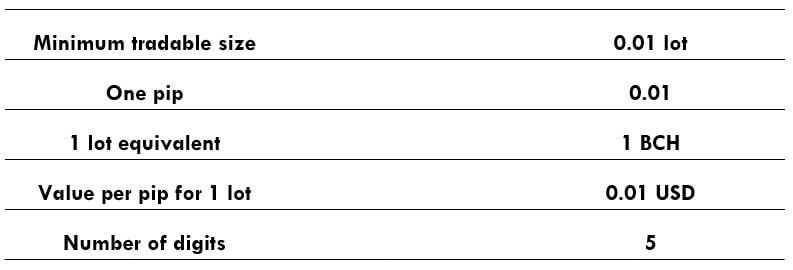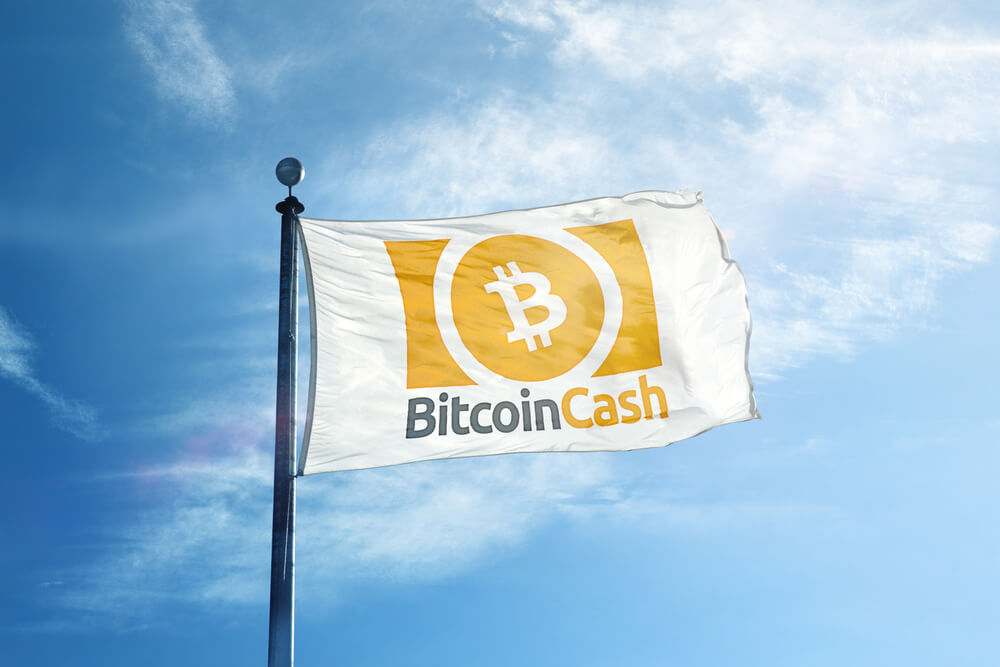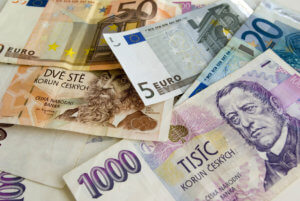Introduction
BCH/USD is a cryptocurrency abbreviated for the Bitcoin Cash against the US Dollar. This is the highest traded cryptocurrency in terms of volume. Also, it is a 24/7 market. Note that, Bitcoin Cash is not the same Bitcoin; both are two different cryptocurrencies.
Understanding BCH/USD
The price of BCH/USD represents the value of the US Dollar that makes up one Bitcoin Cash. It is quoted as 1 BCH per X USD. For example, if the value of BCH/USD is 234.06, these many US Dollars are required to purchase one Bitcoin Cash.
BCH/USD Specifications

Spread
Spread is the difference between the bid and the ask price. Spread is different with different brokers and the type of execution model they use. Below are the ECN & STP values for the BCH/USD pair.
Spread on ECN: 400 pips (4.00 USD) | Spread on STP: 450 pips (4.50 USD)
Fee
A Fee is a commission paid on each position a trader takes and closes. This fee is charged only by ECN brokers. The slippage for each lot traded is a pip. The seems to be less because one lot accounts for only 1 BCH.
Slippage
Slippage is the difference between the price demanded by the trader and the price given by the broker. There are two reasons for slippage to occur:
- High market volatility
- Broker’s execution speed
Trading Range in BCH/USD
A Trading range is the representation of the volatility in BCH/USD for different timeframes. The numbers help in determining the approximate risk and reward on a trade.

Procedure to assess Pip Ranges
- Add the ATR indicator to your chart
- Set the period to 1
- Add a 200-period SMA to this indicator
- Shrink the chart so you can assess a large time period
- Select your desired timeframe
- Measure the floor level and set this value as the min
- Measure the level of the 200-period SMA and set this as the average
- Measure the peak levels and set this as Max.
BCH/USD Cost as a Percent of the Trading Range
A Fee is a variable that varies as the volatility of the market changes. Below are tables depicting the variation in the costs with the change in the volatility.
ECN Model Account
Spread = 400 | Slippage = 10 |Trading fee = 1
Total cost = Slippage + Spread + Trading Fee = 10 + 400 + 1 = 411

STP Model Account
Spread = 450 | Slippage = 10 | Trading fee = 0
Total cost = Slippage + Spread + Trading Fee = 10 + 450 + 0 = 460

Trading the BCH/USD
As mentioned, BCH/USD is currently the most traded cryptocurrency in the market. Therefore, one can expect enough volatility and liquidity. The volatility in BCH/USD is very high. For example, the minimum volatility on the 1H timeframe is 20, while the maximum is 118 on the same timeframe, which is five times the minimum. Hence, this makes this pair highly volatile and risky as well.
So, it is ideal for traders to trade when the volatility is between the average values. The volatility during such times is neither too high nor too low. Also, the costs aren’t too high. If traders wish to reduce costs even further, they could trade via limit or stop orders instead of market orders, as this would completely cut the slippage on the trade. The cost variations when the trades are executed either by limit or stop is given below.
ECN Model Account (Using Limit Orders)
Spread = 400 | Slippage = 0 |Trading fee = 1
Total cost = Slippage + Spread + Trading Fee = 0 + 400 + 1 = 401






